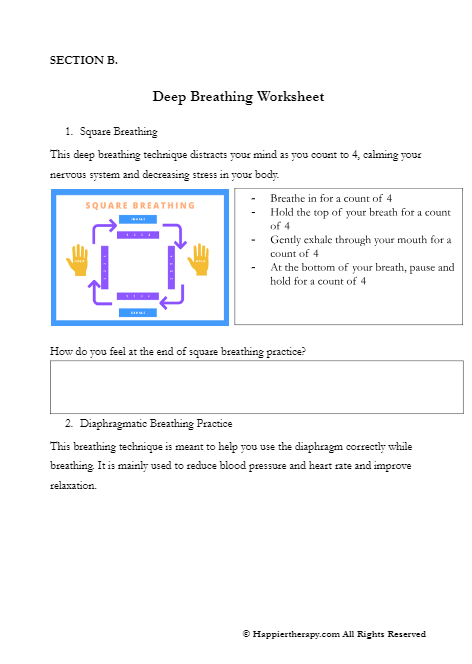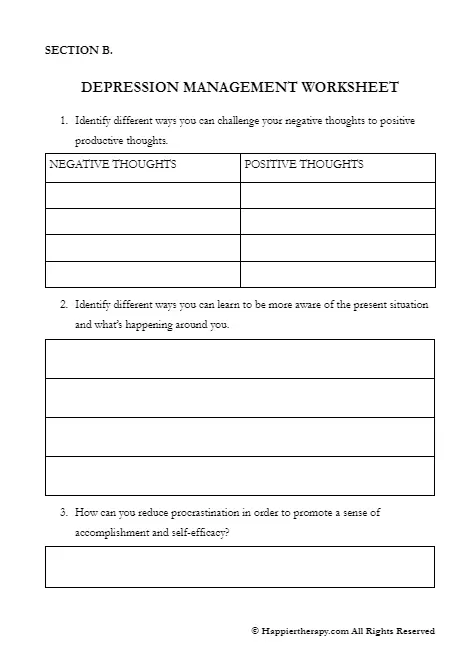DEPRESSION WORKSHEET FOR YOUTH
Depression is a common mental disorder and a severe medical illness that negatively affects how you feel, think, and act.
Depression can also be defined as a negative state of mind ranging from unhappiness and discontent to extreme sadness, pessimism, and dependency that interferes with one’s daily life.
People aged 18 to 24 years (youth) have the highest prevalence of mental disorders. Depression affects 3 in 100 men aged 18 to 24 years and 10 in 100 women of the same age.
Depression among the youth can be linked to the following factors;
- Family history of depression
- Stressful environment
- History of anxiety or other mental health issues
- Substance abuse or reckless behavior
- Personality traits/ low self-esteem
- A traumatic event or stressful events
What Are The Theories Behind This Worksheet?
- Cognitive Behavioral Therapy (CBT)
CBT is a type of psychotherapy used to help an individual identify and change negative thoughts and associated behaviors. For example, people who suffer from depression struggle with negative thought patterns.
- Dialectical Behavior Therapy (DBT)
DBT is a talking therapy adapted to treat individuals who suffer from intense emotions. DBT teaches individuals to identify, accept, and regulate their emotions.
- Behavioral Activation (BA)
BA works with CBT and DBT to treat depression. In addition, BA helps patients adopt a long-term coping strategy by identifying specific goals and working towards meeting them.
- Electroconvulsive Therapy (ECT)
This medical treatment is reserved for patients with severe major depression who have not responded to other treatments. ECT involves a brief electrical stimulation of the brain while the patient is under anesthesia.
How Will This Worksheet Help You?
This worksheet will educate the youth about depression and how it is treated.
Additionally, this worksheet will teach you how to control and manage your negative/distorted thoughts.
How Should You Use This Worksheet?
Youths should use this worksheet when they start to notice signs of depression, such as;
- Anger or irritability
- Oversensitivity to criticism because of extreme feelings of worthlessness
- Selective withdrawal rather than complete isolation
- Unexplained aches and pains
Likewise, youths should use this worksheet when experiencing thoughts of self-harm or suicide.
Was this helpful?
References
1.-
American Psychiatric Association. (© 2022). What Is Depression? Available at: https://www.psychiatry.org/patients-families/depression/what-is-depression. [Accessed December 16, 2022]
2.-
American Psychological Association. (© 2023). Depression. Available at: https://dictionary.apa.org/depression. [Accessed February 07, 2023]
3.-
Better Health. (© 2021). Depression in young people. Available at: https://www.betterhealth.vic.gov.au/health/conditionsandtreatments/Depression-in-young-people. [Accessed February 14, 2023]
4.-
Health Direct. (2023). Depression in young people. Available at: https://www.healthdirect.gov.au/depression-in-young-people. [Accessed February 14, 2023]

 By
By



